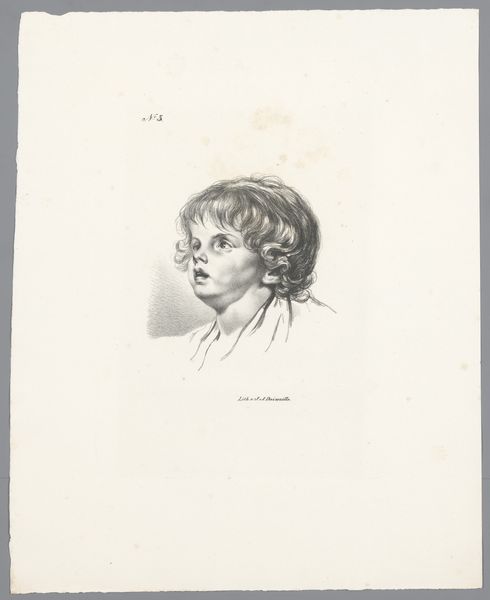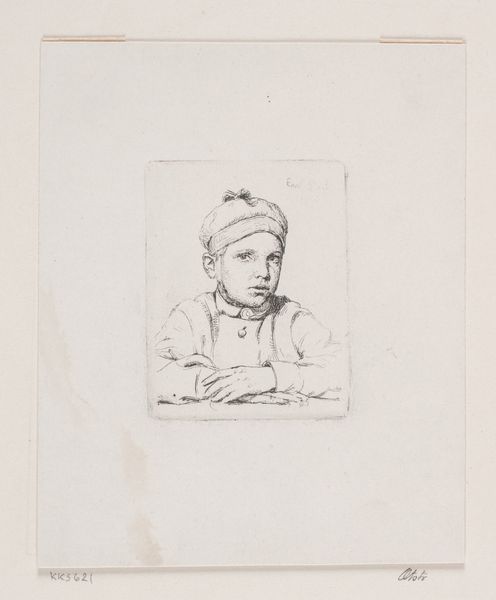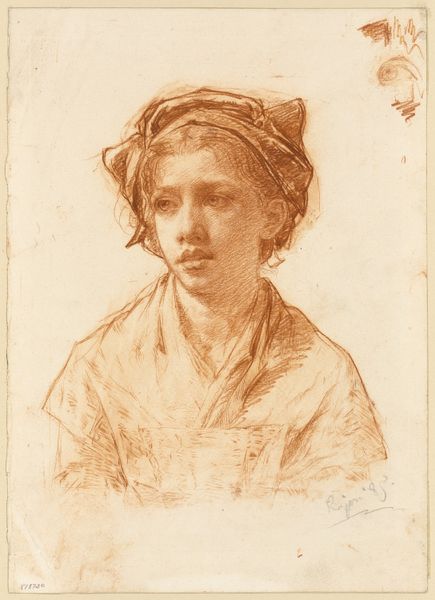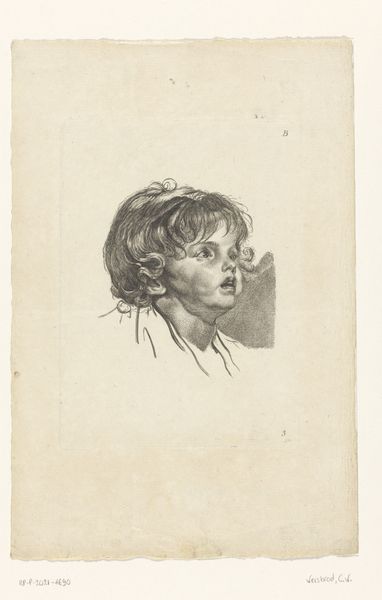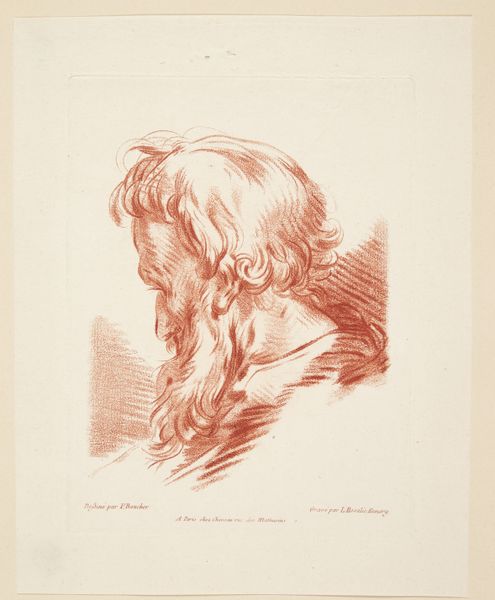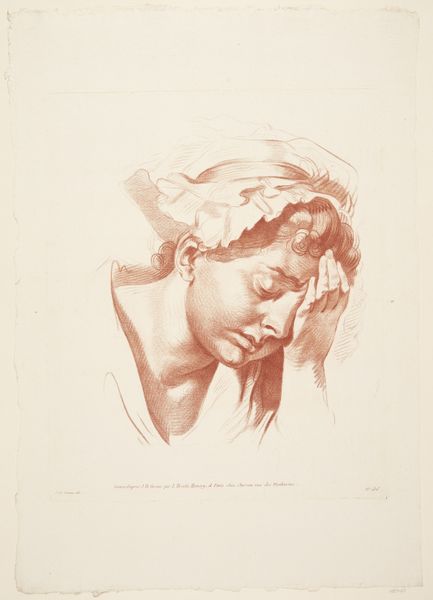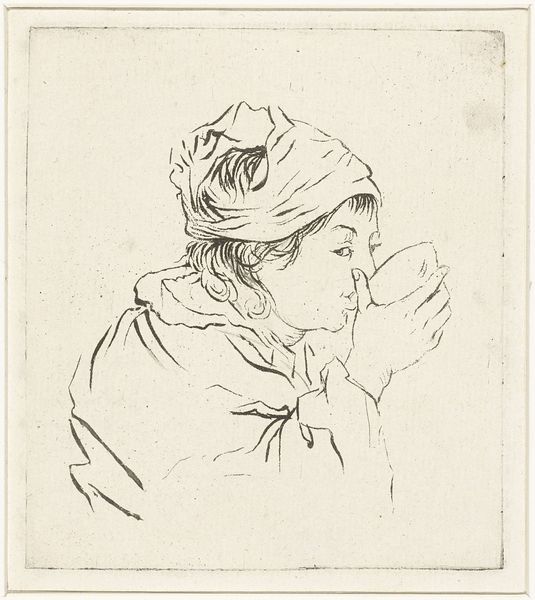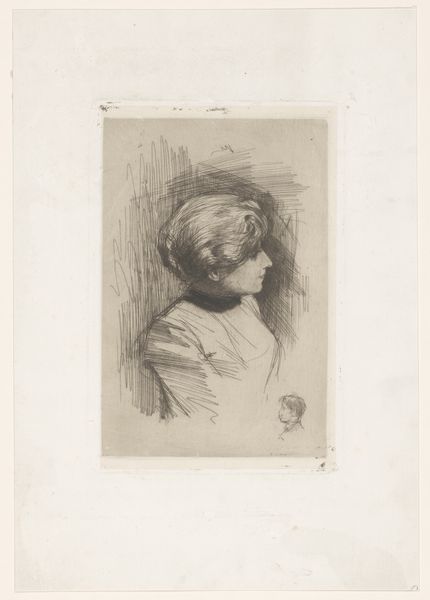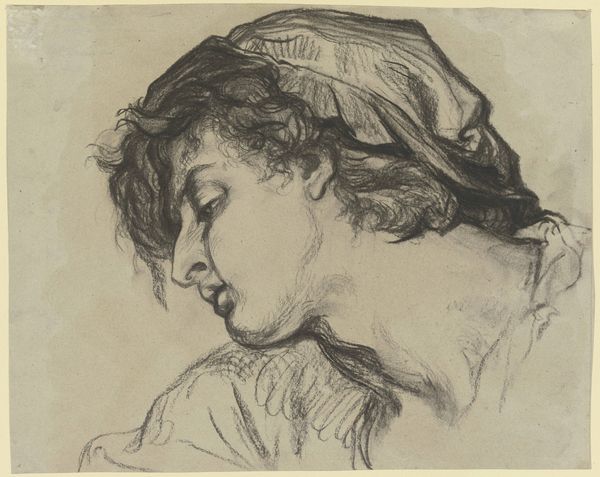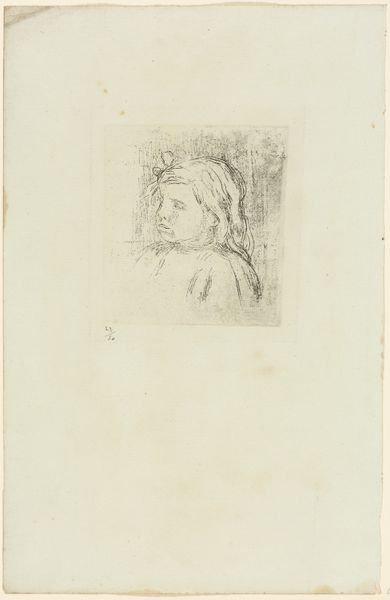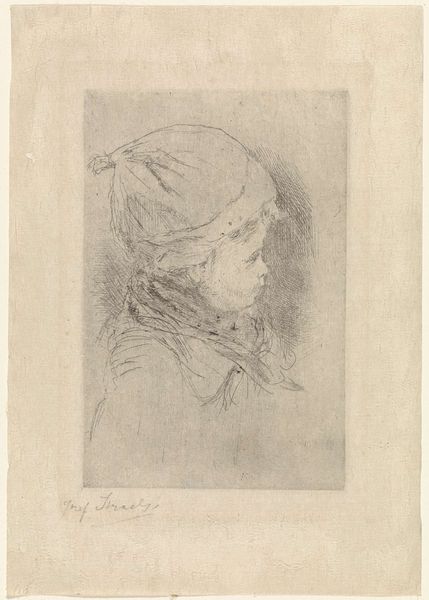
Dimensions: 403 mm (height) x 333 mm (width) (plademål)
Curator: Here we have "Barnehoved, smilende," or "Child's Head, Smiling," an engraving by Louise-Rosalie Hémery, dating to around 1775-1779. It’s currently held in the collection of the SMK, the National Gallery of Denmark. Editor: Well, first glance? What strikes me is the genuine sweetness of the expression, and the warm sepia tones—it gives a very comforting, almost nostalgic feel, doesn't it? Curator: Absolutely. In portraiture of the Rococo period, representing childhood often involved specific iconographic cues. The child's dress, for instance, and the way the hair is styled beneath the bonnet tells us about both social status and idealized notions of innocence. It's not just a child, but childhood itself being presented. Editor: You're right. I can see that now. There’s almost a conscious artificiality about it, even though the smile seems so natural. A contrast that feels very human, somehow. Curator: Consider the medium, too—engraving. The lines, while delicate, are very controlled. It lends the image a sense of clarity, emphasizing that desire for order and reason characteristic of the late 18th century, even when portraying something as seemingly unstructured as a child’s expression. Editor: Do you think this image was trying to tell viewers something about social values? Or does it come down to simpler questions like which family paid to have their cute offspring sketched by the artist? Curator: Both, most likely. Patronage played a role, certainly. But so did a growing interest in childhood as a distinct phase of life. Thinkers of the Enlightenment, like Rousseau, were beginning to explore ideas about education and natural goodness. This image seems to participate in that conversation, even subtly. The rosy color of the engraving mimics the coloring in oil paint which makes this print come across like a study for an oil portrait. Editor: Fascinating. It makes you wonder what happened to this rosy-cheeked cherub later in life. So many questions behind those sparkling eyes... Curator: Indeed. For me, what lingers is the image itself as a container of cultural memory. A reminder of how notions of innocence and virtue have been constructed, visualized, and circulated throughout history. Editor: For me, it is a warm invitation into childhood. The child almost wants you to embrace them in their quiet amusement of whatever is happening beyond the scene.
Comments
No comments
Be the first to comment and join the conversation on the ultimate creative platform.
